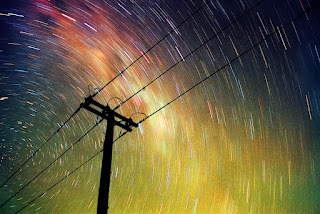my artist statement:
Walking down any street in New York City, one can witness tourists taking hundreds of photographs. Similar to when Kodak introduced the brownie camera in the 1880s, our era of point-and-shoot photography is confronted with the question: what defines photography as a fine art? The brownie was a simple box camera that enabled photography to be accessible to the general public. Two schools of photography, f64 and Pictorialism photographed and staged scenes in which the artistic and aesthetic quality took precedence over what was in front of the camera. Though both groups believed that photography lost recognition as a fine art through its accessibility, the groups diverged in their aesthetics. While the f64s photographed very sharp and clean subjects, Pictorialist images had painterly qualities such as a soft focus, image imperfections, and a low contrast. Greatly blurring the line between a photograph and the painting, Pictorialists explored what defined a piece of art as a masterpiece, a painting, or a photograph. The everyday use of digital photography compelled me to question: What distinguishes my, or any photographer’s, images from those of tourists’? What compels “photographers’” images to be lauded as artistic? Over Thanksgiving vacation, I applied the Pictorialists’ struggle to digital SLR photography in New York City.
my images (in very low quality) in no particular order:
Sunday, December 5, 2010
Sunday, November 21, 2010
very rough drafts for self-design
This weekend, I visited Harvard for their annual Harvard-Yale football game. I thought this would be a good opportunity to take stereotypical pictures. My struggle for this project is to define digital photography as a fine-art. I took some images on my iPhone and used an application called CameraBag which can alter the photo to have certain tones. I'm planning on using a digital pinhole for my final so hopefully they will have somewhat of a similar effect.
Here are a few:
Here are a few:
Tuesday, November 16, 2010
Saturday, November 13, 2010
self-design
I was very inspired by the exhibit we visited as a class in Portland. This exhibit showed the two reactions to the accessibility of the camera and photography. Two very different groups coped with the threat of photography's loss of recognition of a fine art: the f64s and the pictorialists. The pictorialists photographed scenes in which the artistic and aesthetic quality took precedence over what was truly in front of the camera. These photographs had painterly qualities: causing the viewer to question whether the piece of art was either a photograph or a painting. I feel that in our era of digital photography, photographers are confronted with the legitimacy of photography as a fine-art. Thus, in my self-design I want to apply this pictorialist mind-set to digital photography. I want to use the same techniques of haziness and posed photography, but use them on my digital SLR camera. Over Thanksgiving break, I want to use New York City as my primary subject and attempt to photograph idealistic scenes that can either be a painting or a photograph. Some non-photographic inspirations:
- portland f64/pictoralism exhibit
- historical context of pictoralism and how it relates to our era of digital photography
- what constitutes a fine-art photograph from a "facebook" photo through digital photogrpahy
- the men who sell the quintessential images of New York around Central Park
- the feeling of holidays, tourists and consumerism in New York
- how parts of New York can look like they're from the early 20th century, where other parts are very modern and their relationship
- my family's relationship to New York and what it means to grow up in the city v. a visitor
- how doormen experience New York - they're forced to spend all day outside looking at the exact same scene - what do they see? what changes? do they become phased?
And here are some photographic inspirations....

- portland f64/pictoralism exhibit
- historical context of pictoralism and how it relates to our era of digital photography
- what constitutes a fine-art photograph from a "facebook" photo through digital photogrpahy
- the men who sell the quintessential images of New York around Central Park
- the feeling of holidays, tourists and consumerism in New York
- how parts of New York can look like they're from the early 20th century, where other parts are very modern and their relationship
- my family's relationship to New York and what it means to grow up in the city v. a visitor
- how doormen experience New York - they're forced to spend all day outside looking at the exact same scene - what do they see? what changes? do they become phased?
And here are some photographic inspirations....
Robert Demachy

Tuesday, November 9, 2010
Monday, October 25, 2010
time: other photographers as inspiration
"Lights Out"
James Neeley
"Waterfigure"
Fotoopa
"Bullet Shot"
David Neff
James Neeley
"Waterfigure"
Fotoopa
"Bullet Shot"
David Neff
"Toronto Time Lapse"
Sam Javanrouh
"Long Exposure of Fireworks"
Stormie Heather
"Capetown"
Jakob Wagner
"Do you really want to exit here"
Gregor Bornsek
"Energy"
Onesadlittleboy
"Estrellas en el firmamento"
Martin Zalba Ibanez
"Fire on Malborough Street"
Stanley Forman
Wednesday, October 13, 2010
Wednesday, October 6, 2010
material matters: other photographer's cyanotypes, hand colored photographs, and pinhole photographs
Cyanotypes
"Silo + Crossing" Jacqueline Webster (2004)
5" X 3 1/2
"Equisetum sylvaticum" Anna Atkins and Anne Dixon (1853)
10" x 7 7/8
"When Time Stood Still" Carsten Schurig
"Working Hand" Lene Bennike
"Crackley Wood" Jim Read
Hand Colored
48 1/4 x 42 1/4 | ||
"Soviet / American Array" Robert Rauschenberg (1988)
87" x 52"
"Radio Active I" Robert Rauschenberg (1964)
84 x 60"
"Estate" Robert Rauschenberg (1963)
96" x 70
96" x 70
"Tracer" Robert Rauschenberg (1963)
84" x 60
Subscribe to:
Posts (Atom)


















































